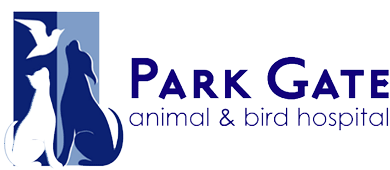1. Keep your dog trim
Keep your dog at a slim, trim body weight. Obesity dramatically contributes to ever so many age-related, debilitating issues such as arthritis (a huge problem for way too many dogs), diabetes and heart disease. Feed your dog as little as it takes to maintain an ideal body condition score. Remember, in general, older dogs require approximately 30 percent fewer calories to maintain a healthy body weight. If your dog is overweight, ask your veterinarian to help you devise a plan to tackle this problem.
2. Feed your dog a complete diet
Speaking of feeding your dog, be sure to choose diets that are:
- Nutritionally complete
- Of very high quality
- Appropriate for your dog’s stage of life
Once you have a senior citizen on your hands, a diet that is higher in fiber and less calorically dense is usually the best choice. Multiple small meals may be better suited to your dog than feeding a larger meal once daily.
3. Exercise with your dog
Get out there and exercise with your dog! Not only will exercise help burn calories, it will strengthen muscles, enhance circulation and improve your dog’s heart and brain function. The activity you choose should be appropriate for your dog’s level of strength and stamina. No weekend warriors allowed. Shorter, more freq

uent walks may be better than going for a five-mile run. Gradually build up the duration and exertion of your dog’s activity level.
4. Keep your dog pain free
Speaking of exercise, be sure to take the steps necessary to allow your dog to be active. If arthritis pain is getting in the way, work with your veterinarian to find the right combination of remedies to allow your dog to be comfortable enough to exercise. There are a myriad of treatment modalities to choose from:
- Acupuncture
- Massage
- Underwater treadmill therapy
- Supplements
- Anti-inflammatory medications
The list goes on and on. Inactivity promotes a downhill cascade of events that is just about guaranteed to negatively impact your dog’s longevity. Do what it takes to keep your favorite pooch from becoming a couch potato.
5. Consider the changes your dog is going through
As your aged dog experiences loss of hearing and/or vision, leash walks and closer supervision become a necessity. Prevent your canine senior citizen from encountering physical harm because of changes. Teaching hand signals at an early age will pay off as your dog begins to experience age-related hearing loss. Doublecheck the whereabouts of your older dog before pulling into, or backing out of your driveway. Older dogs are less agile. Add to this deeper sleep and diminished hearing or vision and, without extra caution, a driveway tragedy can happen. (Unfortunately, such tragic accidents occur all too often.) Whereas youngsters can recover from broken body parts lickety split, such is not the case for older dogs.
6. Act fast when your dog seems sick
Act sooner rather than later when your dog isn’t feeling well. Compared to young and middle-aged dogs, seniors have less physical reserve and are more prone to becoming compromised following a spate of symptoms, including:
Whereas a 24-hour “wait and watch” approach might be reasonable for the youngster with such symptoms, waiting this long with an older dog before contacting your veterinarian may have dire consequences.
7. Schedule more regular checkups with your veterinarian
Even if you think your dog is perfectly healthy. Once a year is ideal for young and middle aged dogs. Switch to twice yearly exams for seniors. A head to toe physical examination, discussing how your dog is faring, and blood and urine testing (particularly if your dog is elderly) will allow your veterinarian to detect abnormalities early, prevent minor issues from becoming major issues, and outline a preventive health care plan for your beloved best friend.
If you have any questions or concerns, you should always visit or call us at 604-9291863 – we are your best resource to ensure the health and well-being of your pets.

